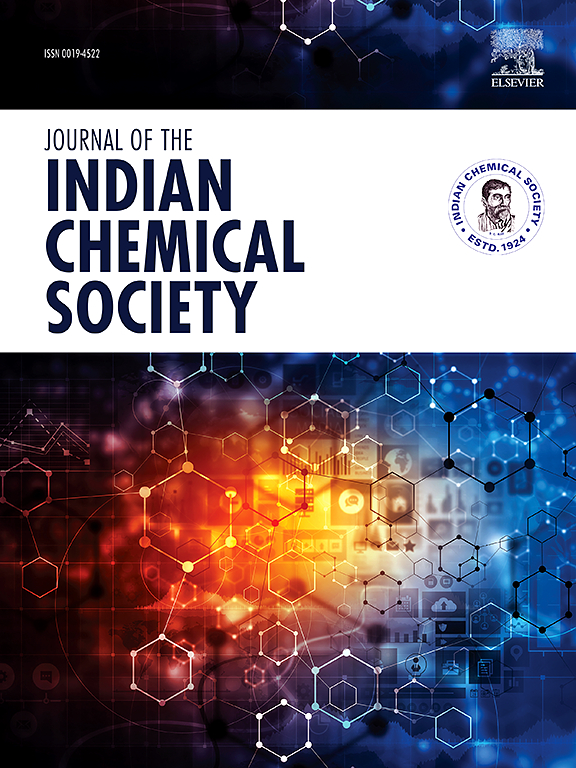Enhanced antimicrobial activity: Synthesis and structural analysis of Co(II) and Cu(II) coordinated metal complexes with azo-thiol NS bidentate ligands
IF 3.2
4区 化学
Q2 CHEMISTRY, MULTIDISCIPLINARY
引用次数: 0
Abstract
In this study, we successfully designed and synthesized two novel metal complexes, Cobalt(II) (CoSDN) and Copper(II) (CuSDN), derived from the 4-[(2-sulfanylphenyl)diazenyl]naphthalen-1-ol (SDN) ligand. A suite of advanced techniques, including UV–Vis spectroscopy, mass spectrometry, infrared (IR) spectroscopy, elemental analysis, conductivity and magnetic measurements, and thermogravimetric analysis (TGA), was employed for comprehensive characterization. The IR spectroscopy results confirmed that the SDN ligand coordinates to metal ions through the nitrogen atom of its azo (-N![]() N-) linkage and the sulfur atom of the thiol (-SH) group. Thermal analysis (TGA) revealed additional insights into the binding environment, particularly the involvement of water molecules within the complexes' structures. Furthermore, the antimicrobial potential of the SDN ligand, as well as its CoSDN and CuSDN complexes, was rigorously evaluated through in vitro testing against a spectrum of pathogenic bacteria and fungi. Notably, the CoSDN and CuSDN complexes demonstrated significantly enhanced antimicrobial activity compared to the free SDN ligand, effectively inhibiting specific microorganisms. These findings underline the exceptional promise of these metal complexes for future biomedical applications, suggesting their potential as innovative therapeutic agents to combat microbial threats.
N-) linkage and the sulfur atom of the thiol (-SH) group. Thermal analysis (TGA) revealed additional insights into the binding environment, particularly the involvement of water molecules within the complexes' structures. Furthermore, the antimicrobial potential of the SDN ligand, as well as its CoSDN and CuSDN complexes, was rigorously evaluated through in vitro testing against a spectrum of pathogenic bacteria and fungi. Notably, the CoSDN and CuSDN complexes demonstrated significantly enhanced antimicrobial activity compared to the free SDN ligand, effectively inhibiting specific microorganisms. These findings underline the exceptional promise of these metal complexes for future biomedical applications, suggesting their potential as innovative therapeutic agents to combat microbial threats.

求助全文
约1分钟内获得全文
求助全文
来源期刊
CiteScore
3.50
自引率
7.70%
发文量
492
审稿时长
3-8 weeks
期刊介绍:
The Journal of the Indian Chemical Society publishes original, fundamental, theorical, experimental research work of highest quality in all areas of chemistry, biochemistry, medicinal chemistry, electrochemistry, agrochemistry, chemical engineering and technology, food chemistry, environmental chemistry, etc.

 求助内容:
求助内容: 应助结果提醒方式:
应助结果提醒方式:


